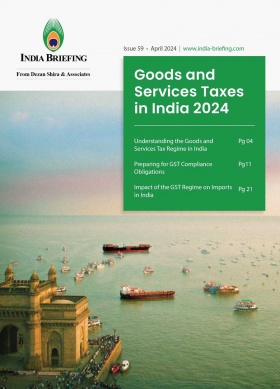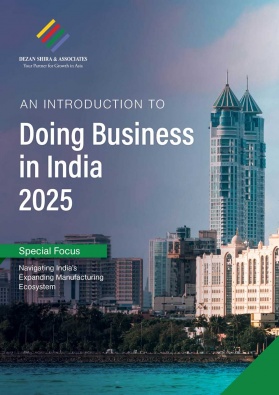India to Propel South Asia as Fastest Growing Region: World Bank
The World Bank projects that the Indian economy will grow at an average annual rate of 6.7 percent from 2024 to 2026, driven by solid services, strong domestic demand, and a spike in investment.
In April, the World Bank raised India’s GDP growth forecast for FY 2024-25 by 20 basis points to 6.6 percent. Following a strong performance in FY 2023-24, the World Bank anticipates an average growth rate of 6.7 percent in FY 2025-26 and 6.8 percent in FY2026-27 for the country.
India’s strong GDP amid regional slowdown
India’s GDP growth in the January-March quarter exceeded expectations, reaching 7.8 percent, although down from 8.4 percent in the preceding quarter. According to data from the Ministry of Statistics and Programme Implementation released on May 31, India’s GDP growth for the entire fiscal year 2023-24 was revised upwards to 8.2 percent from the second advance estimate of 7.6 percent.
In the South Asia region (SAR), GDP growth is expected to decline from 6.6 percent in 2023 to 6.2 percent in 2024, per World Bank estimates, primarily due to a moderation of growth in India from a high base in recent years. India also saw sustained high activity in the early months of 2024.
The World Bank report ‘Global Economic Prospects’ notes that investment growth in India is still expected to be stronger than previously envisaged and remain robust over the forecast period, with strong public investment accompanied by private investment. Falling inflation and a rebound in agricultural output will help support the increase of private spending in India.
Fiscals restrain and inflation moderation
Fiscal restraint is expected to act as a modest drag on growth in the SAR region in the forecast period. The World Bank predicts that in several countries, fiscal policy is likely to tighten as part of adjustment and reform programs. In India, the fiscal deficit is projected to shrink relative to GDP, partly because of increased revenues generated by the central government’ efforts to broaden the tax base. The South Asia region’s fiscal imbalances will gradually improve, although, apart from India, a reduction of fiscal deficits is expected to be smaller.
The World Bank report’s overall forecast implies that over the course of 2024-26, countries that collectively account for more than 80 percent of the world’s population and global GDP would still be growing more slowly than they did in the decade before the COVID-19 pandemic.
Despite better near-term prospects, the global outlook remains subdued, with downside risks including geopolitical tensions, trade fragmentation, prolonged high interest rates, and climate-related disasters. The World Bank emphasizes that global cooperation is crucial to protect trade, support green and digital transitions, provide debt relief, and enhance food security.
Conclusion
India is poised to maintain its economic boom driven by both domestic demand and investments, thereby assuring its continued growth trend in the global economy and lifting the economic outlook of the South Asia region. However, sustainable development and economic resilience will depend on the management of issues like fiscal spending and geopolitical events.
About Us
India Briefing is one of five regional publications under the Asia Briefing brand. It is supported by Dezan Shira & Associates, a pan-Asia, multi-disciplinary professional services firm that assists foreign investors throughout Asia, including through offices in Delhi, Mumbai, and Bengaluru in India. Dezan Shira & Associates also maintains offices or has alliance partners assisting foreign investors in China, Hong Kong SAR, Vietnam, Indonesia, Singapore, Malaysia, Mongolia, Dubai (UAE), Japan, South Korea, Nepal, The Philippines, Sri Lanka, Thailand, Italy, Germany, Bangladesh, Australia, United States, and United Kingdom and Ireland.
For a complimentary subscription to India Briefing’s content products, please click here. For support with establishing a business in India or for assistance in analyzing and entering markets, please contact the firm at india@dezshira.com or visit our website at www.dezshira.com.
- Previous Article India-Qatar Investment and Trade Relations
- Next Article IT/ITES in Karnataka Get Labor Law Exemption for Five More Years







